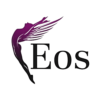Table of Contents
ToggleChina, with its vast talent pool and rapidly growing economy, presents significant opportunities for businesses looking to expand their operations. As the world’s second-largest economy and a hub for various industries, including technology, manufacturing, and finance, China offers a rich reservoir of highly skilled professionals.
However, hiring in China requires a nuanced understanding of the local labour market, regulatory environment, and cultural nuances. Navigating the intricacies of China’s labour laws, understanding the workforce’s expectations, and aligning with cultural practices are essential for successful talent acquisition. The regulatory framework in China is stringent and often intricate, with specific requirements for employment contracts, social insurance contributions, and work permits, particularly for foreign workers. For instance, the Chinese Labour Contract Law mandates written contracts within the first month of employment, and non-compliance can result in severe penalties, including double wage compensation for the employee.
Moreover, the cultural nuances in China play a crucial role in the hiring process. Concepts such as “guanxi” (personal connections) and “mianzi” (face or reputation) are deeply embedded in Chinese business practices. Building strong relationships and understanding the importance of respect and reputation can significantly impact the recruitment process. Companies must also be aware of the collectivist nature of Chinese society, which values group harmony and teamwork over individual accomplishments.
Given these complexities, businesses must adopt a strategic approach to hiring in China. This involves not only compliance with local regulations but also an appreciation of cultural dynamics and a well-thought-out plan for talent acquisition. Here’s a comprehensive guide to navigating the complexities of talent acquisition in China, ensuring your business can successfully attract, hire, and retain top talent in this dynamic market.
Understanding the Labour Market
China’s labour market is characterised by its size and diversity. The country has many highly skilled professionals, particularly in the technology, engineering, and manufacturing sectors. According to Statista, China boasts the largest labour force in the world, with nearly 800 million workers, providing an immense pool of potential employees for businesses seeking to tap into this market.
Most of the workforce is concentrated in major urban centres such as Beijing, Shanghai, Shenzhen, and Guangzhou, where the demand for skilled professionals is particularly high.
In Beijing, the capital city, and Shanghai, the country’s financial hub, the job market is highly competitive due to the concentration of multinational corporations and leading Chinese firms. Shenzhen, known as the “Silicon Valley of China,” attracts a significant portion of tech talent, while Guangzhou is a major centre for manufacturing and trade.
1. Regional Distribution and Minimum Wages
The distribution of workers varies significantly across different regions. For instance, coastal provinces like Guangdong, Jiangsu, and Zhejiang are industrial powerhouses with high concentrations of factory workers and skilled labour in the manufacturing and technology sectors. In contrast, inland provinces like Sichuan, Henan, and Hunan, while still significant, have a larger portion of agricultural and lower-wage labour.
2. Minimum Wages
The minimum wages in China vary significantly from region to region, reflecting differences in the cost of living and economic development levels. Due to these variations, companies need to customize their recruitment and compensation strategies based on the respective regional economic conditions in order to attract and retain top talent. The following list shows the minimum wages in each Chinese province as of January 2024.
| Region | Monthly Minimum Wage (CNY) | Lowest Hourly Wage (CNY) | ||
|---|---|---|---|---|
| First Tier | Lowest Tier | First Tier | Lowest Tier | |
| Beijing | 2420 | – | 26.4 | – |
| Tianjin | 2320 | – | 24.4 | – |
| Hebei | 2200 | 1800 | 22 | 18 |
| Shanxi | 1980 | 1780 | 21.3 | 19.1 |
| Inner Mongolia | 1980 | 1850 | 20.8 | 19.5 |
| Liaoning | 1910 | 1420 | 19.2 | 14.3 |
| Jilin | 1880 | 1540 | 19 | 16 |
| Heilongjiang | 1860 | 1450 | 18 | 13 |
| Shanghai | 2690 | – | 24 | – |
| Jiangsu | 2490 | 2010 | 24 | 20 |
| Zhejiang | 2490 | 2010 | 24 | 20 |
| Anhui | 2060 | 1780 | 21 | 18 |
| Fujian | 2030 | 1660 | 21 | 17.5 |
| Jiangxi | 1850 | 1610 | 18.5 | 16.1 |
| Shandong | 2200 | 1820 | 22 | 18 |
| Henan | 2100 | 1800 | 20.6 | 17.6 |
| Hubei | 2010 | 1650 | 19.5 | 15 |
| Hunan | 1930 | 1550 | 19 | 15 |
| Guangdong | 2300 | 1720 | 22.2 | 16.1 |
| Shenzhen | 2360 | – | 22.2 | – |
| Guangxi | 1990 | 1690 | 20.1 | 17 |
| Hainan | 2010 | 1850 | 17.9 | 16.3 |
| Chongqing | 2100 | 2000 | 21 | 20 |
| Sichuan | 2100 | 1970 | 22 | 20 |
| Guizhou | 1890 | 1760 | 19.6 | 17.2 |
| Yunnan | 1990 | 1840 | 19 | 17 |
| Tibet | 2100 | – | 20 | – |
| Shaanxi | 2160 | 2050 | 21 | 19 |
| Gansu | 2020 | 1850 | 21 | 19.5 |
| Qinghai | 1880 | – | 18 | – |
| Ningxia | 1950 | 1750 | 18 | 16 |
| Xinjiang | 1900 | 1540 | 19 | 15.4 |
The original table source is from *Ministry of Human Resource and Social Security of the People’s Republic of China’s minimum wage standards in provinces, autonomous regions, and municipalities across China (as of April 1, 2024)*
Further Reading: Understanding Minimum Wage China 2024: A Comprehensive Guide
3. Competitive Labour Market
Despite the vast labour pool, competition for top talent remains fierce, especially in the aforementioned urban centres. Companies need to offer competitive salaries, benefits, and career development opportunities to attract highly skilled professionals. Additionally, understanding local regulations and cultural nuances is crucial for successful talent acquisition and retention.
In summary, China’s labour market is diverse and regionally varied, with significant concentrations of workers in key urban and industrial centres. Minimum wages differ substantially across regions, reflecting local economic conditions and cost of living. Businesses must navigate these complexities to effectively tap into China’s vast talent pool.
Regulatory Environment
Hiring in China involves navigating a complex regulatory framework to protect workers’ rights and ensure fair employment practices. Understanding and complying with these regulations is crucial for businesses to avoid legal penalties and maintain a productive workforce. Here are key aspects to consider:
1. Employment Contracts
Chinese labour law mandates that all employees must have written employment contracts within the first month of employment. These contracts must clearly outline key terms such as job duties, compensation, working hours, and the duration of employment. Failing to provide a written contract can lead to significant penalties, including the requirement to pay double wages to the employee for the period without a contract.
Detailed Requirements:
- Content of Contracts: Employment contracts must include basic information such as the employee’s name, position, job description, work location, salary details, and working hours. Additionally, they should outline probationary periods, if applicable, and conditions under which the contract can be terminated.
- Probation Period: The probation period should not exceed six months for contracts of three years or more and must be proportionate to the contract length for shorter-term contracts.
- Penalties for Non-Compliance: Employers who fail to provide a written contract must pay double the employee’s wages for each month of non-compliance up to 12 months.
Example: A technology company in Shanghai hired several software developers but did not provide written contracts within the stipulated time. As a result, the company was required to pay double wages to each developer for the first three months of employment, leading to significant financial loss and administrative burden.
Source: China employment and labour guide
2. Social Insurance
Employers in China must contribute to social insurance schemes, which include pensions, medical insurance, unemployment insurance, work-related injury insurance, and maternity insurance. Contribution rates and requirements vary by region and are subject to regular adjustments. These contributions are mandatory and are crucial in safeguarding employees’ welfare.
Components of Social Insurance:
- Pension Insurance: Provides retirement benefits to employees. Both employers and employees contribute a percentage of the employee’s salary.
- Medical Insurance: Covers healthcare costs. Contributions are typically split between employers and employees.
- Unemployment Insurance: Provides financial support to employees who lose their jobs. Contributions are usually made by employers.
- Work-Related Injury Insurance: Covers medical expenses and compensation for injuries sustained at work. This is fully funded by employers.
- Maternity Insurance: Provides financial support for female employees during maternity leave. Contributions are made by employers.
Example: A manufacturing firm in Guangdong province faced penalties for failing to enrol its employees in the mandatory social insurance schemes. This oversight resulted in fines and damaged the company’s reputation among potential hires and current employees.
Source: China’s social security system
3. Work Permits and Visas
Foreign companies hiring expatriates must ensure their employees have the appropriate work permits and visas. The process involves multiple steps and requires careful adherence to regulations to avoid legal complications. Work permits are essential for ensuring foreign employees are legally authorised to work in China.
Steps to Obtain Work Permits:
- Pre-Employment Verification: Verify that the foreign candidate has the necessary qualifications and experience.
- Work Permit Application: Submit the application to the local labour bureau, including required documents such as the employment contract, health certificates, and educational qualifications.
- Z-Visa Application: After obtaining the work permit, the employee must apply for a Z-visa (work visa) at a Chinese embassy or consulate. Check out our article China Work Visa (Z Visa): Comprehensive Application Guide.
- Business Visa (M Visa): Applications should be submitted in person or through an authorised agent. All documents must follow the specific format and sizes outlined in the Application Checklist. For more details, please read our article on the China Business Visa (M Visa) to find out everything you need to know.
- Residence Permit: Upon arrival in China, the employee must apply for a residence permit within 30 days, allowing them to legally reside and work in the country.
Example: A consulting firm in Beijing hired a senior manager from Germany but failed to secure the appropriate work visa. The manager had to leave the country abruptly, leading to project delays and client dissatisfaction. The firm also faced fines for non-compliance with immigration laws.
Source: About Chinese Visa
Further reading:
Cultural Nuances
Besides navigating through the complex business environment and hiring policy, understanding Chinese cultural nuances is also critical for successful talent acquisition. Here are some important considerations:
- Guanxi: Building relationships (guanxi) is fundamental in Chinese business culture. Establishing trust and a good rapport with potential hires and business partners can significantly influence recruitment success.
- Face (Mianzi): Respecting an individual’s dignity and reputation (mianzi) is vital. Constructive feedback should be given privately, and public recognition should be used to build morale and loyalty.
- Collectivism: Chinese culture tends to value collectivism over individualism. Emphasizing team achievements and group harmony can resonate well with Chinese employees.
Further Reading: Understanding Cultural Nuances in Business Negotiations Across APAC
Strategies for Effective Talent Acquisition
Navigating the talent acquisition landscape in China requires a multifaceted approach that leverages local expertise, academic partnerships, strong employer branding, and competitive compensation packages. Here’s how businesses can effectively attract and retain top talent in this dynamic market:
1. Local Recruitment Agencies
Partnering with local recruitment agencies can be instrumental in navigating the complexities of the Chinese labour market. These agencies possess deep insights into local hiring trends, salary benchmarks, and cultural nuances, which can significantly streamline the recruitment process.
- Expertise and Networks: Local recruitment agencies have established networks and relationships within the industry, enabling them to quickly identify and connect with potential candidates. Their understanding of local regulations and market conditions helps ensure compliance and efficiency in the hiring process.
- Tailored Recruitment Strategies: These agencies can provide tailored recruitment strategies that align with the specific needs of the business. For example, they can help source candidates with niche skills in high-demand sectors such as technology and engineering.
Example: A multinational corporation looking to expand its operations in Shenzhen partnered with a local recruitment agency. The agency’s expertise and local knowledge helped the company fill key positions within a short timeframe, significantly reducing the time-to-hire and improving the quality of hires.
2. University Partnerships
Collaborating with universities is a highly effective strategy for attracting young talent in China. Many Chinese universities have robust programs in engineering, technology, and business, producing graduates with the skills needed for various industries.
- Campus Recruitment Programs: Establishing campus recruitment programs allows businesses to engage with students early in their academic careers. Companies can participate in job fairs, offer internships, and sponsor university events to build relationships with potential candidates.
- Research and Development Collaborations: Partnering with universities on research and development projects can provide access to cutting-edge technology and innovative ideas. This not only enhances the company’s innovation capabilities but also attracts top talent interested in working on groundbreaking projects.
Example: A leading technology firm partnered with Tsinghua University to establish a joint research lab. This collaboration not only advanced the company’s R&D efforts but also provided a direct pipeline for recruiting top graduates from one of China’s premier institutions.
3. Employer Branding
In a competitive labour market, a strong employer brand is crucial for attracting and retaining top talent. Businesses need to highlight their commitment to innovation, career development opportunities, and a positive workplace culture to stand out to potential hires.
- Showcase Company Culture: Use social media, company websites, and employee testimonials to showcase the company’s culture and values. Highlight initiatives such as diversity and inclusion programs, corporate social responsibility efforts, and employee engagement activities.
- Awards and Recognitions: Pursue awards and recognitions that validate the company’s reputation as an employer of choice. Being listed as a top employer by reputable organisations can significantly enhance the company’s attractiveness to job seekers.
Example: A global pharmaceutical company consistently ranked as one of the best places to work in China due to its robust employee development programs and commitment to social responsibility. This strong employer brand helped the company attract and retain top talent across various functions.
4. Competitive Compensation Packages
Offering competitive compensation packages is essential to attract and retain top talent in China. In addition to competitive salaries, businesses should consider providing comprehensive benefits that address the diverse needs of employees.
- Financial Incentives: Offer competitive base salaries, performance bonuses, and stock options to attract high-caliber candidates. Regularly benchmark compensation against industry standards to ensure competitiveness.
- Health and Wellness Benefits: Provide comprehensive health insurance, wellness programs, and mental health support to ensure the well-being of employees.
- Housing Allowances and Relocation Support: Offer housing allowances, relocation support, and expatriate benefits to attract talent from different regions or countries.
- Professional Development Opportunities: Invest in professional development programs such as training courses, leadership development initiatives, and tuition reimbursement. These opportunities not only enhance employees’ skills but also demonstrate the company’s commitment to their growth.
Example: A multinational engineering firm implemented a comprehensive benefits package that included competitive salaries, health insurance, housing allowances, and continuous learning opportunities. This holistic approach helped the company attract top engineering talent and maintain high employee satisfaction and retention rates.
Further reading: Effective Talent Acquisition Strategies for HR Professionals, Hiring Managers, and Recruiters
Strategies for Retaining Talent
It’s crucial to not only have solid talent acquisition strategies in China, but also to prioritise keeping top talent on board. This is where Employer of Record (EOR) services can play a pivotal role. EOR services handle all employment-related tasks, including payroll management, benefits administration, and compliance with local labour laws, allowing businesses to focus on their core operations.
1. Comprehensive Payroll Management
An EOR ensures accurate and timely payroll processing, which is crucial for maintaining employee satisfaction and trust. Here’s how EOR services can streamline payroll management:
- Local Compliance: An EOR stays updated with the latest changes in local tax laws and regulations, ensuring that payroll calculations comply with Chinese labour laws. This includes managing various deductions, contributions to social insurance schemes, and adhering to minimum wage standards.
- Timely Payments: Ensuring employees are paid on time is essential for maintaining morale and productivity. An EOR manages payroll schedules, ensuring all employees receive their salaries promptly, whether they are paid weekly, bi-weekly, or monthly.
- Expense Management and Fapiao Requirements: EOR services can handle employee reimbursements, travel expenses, and other related costs, ensuring accurate tracking and timely reimbursement. In China, the “fapiao” (official tax receipt) system is crucial for documenting business expenses. An EOR can manage the collection and submission of fapiao, ensuring compliance with local tax regulations and providing the necessary documentation for financial audits.Example: A multinational corporation expanding in China partnered with an EOR to manage its payroll. The EOR handled all aspects of payroll processing, including compliance with regional tax laws and social insurance contributions. This partnership allowed the company to avoid costly payroll errors and ensure employee satisfaction.
2. Benefits Administration
Providing competitive benefits is a key component of talent retention. An EOR can administer various employee benefits, ensuring they align with local practices and expectations:
- Health and Wellness Programs: An EOR can manage health insurance plans, wellness programs, and other health-related benefits, ensuring compliance with local standards and enhancing employee well-being.
- Retirement Plans: Administering pension schemes and other retirement benefits is crucial for long-term employee satisfaction. An EOR ensures that contributions to retirement plans are handled correctly and comply with local regulations.
- Additional Benefits: EOR services can also manage housing allowances, relocation packages, and expatriate benefits, providing a comprehensive benefits package that attracts top talent.
Example: A tech company expanding into Shenzhen used an EOR to administer its employee benefits. The EOR provided tailored benefits packages, including health insurance, housing allowances, and professional development opportunities. This approach helped the company attract and retain high-quality employees in a competitive market.
3. Tax Exemption Assistance
Navigating the tax landscape in China can be challenging, particularly for expatriates who may be eligible for various tax exemptions. An EOR can assist employees in understanding and applying for these exemptions, ensuring compliance with local tax laws and maximising their take-home pay.
- Identifying Eligible Exemptions: An EOR can identify tax exemptions and deductions that employees may be eligible for, such as those related to housing, education, and relocation expenses.
- Application Support: The EOR provides support in the application process for tax exemptions, ensuring that all necessary documentation is prepared and submitted correctly.
- Ongoing Compliance: An EOR continuously monitors changes in tax regulations to ensure that employees remain compliant and continue to benefit from applicable exemptions.
Example: An international consulting firm in Beijing partnered with an EOR to assist their expatriate employees with tax exemption applications. The EOR identified eligible deductions and guided employees through the application process, resulting in significant tax savings and increased employee satisfaction.
4. HR Management and Compliance
HR management is a critical function that ensures the smooth operation of a business. An EOR can provide comprehensive HR services, from recruitment to compliance management:
- Recruitment Support: EOR services can assist with the recruitment process, helping to interview, and onboard new employees. This support is invaluable for businesses unfamiliar with the local labour market.
- Performance Management: An EOR can implement performance management systems, conduct regular performance reviews, and provide feedback to help employees grow and succeed in their roles.
- Legal Compliance: Ensuring compliance with Chinese labour laws is complex and essential. An EOR manages all legal aspects of employment, including contracts, terminations, and dispute resolutions, minimising legal risks.
Example: A global manufacturing firm entering the Chinese market faced challenges with HR compliance. By partnering with an EOR, the firm ensured all employment practices complied with local labour laws. The EOR handled employee contracts, performance reviews, and dispute resolutions, allowing the firm to focus on its core operations.
Conclusion
Navigating the complexities of talent acquisition in China requires a thorough understanding of the local labour market, regulatory environment, and cultural nuances. Businesses can effectively attract and retain top talent in this dynamic market by leveraging local expertise, building strong relationships, and offering competitive compensation packages.
For expert guidance on hiring in China and navigating the complexities of talent acquisition and management, contact Eos Global Expansion. Our team of professionals is here to support you with tailored solutions designed to enhance your recruitment strategies and ensure compliance with local regulations. Contact us today to learn more about how we can help you achieve your business goals in China. Check our full-range of EOR services here or book a free consultation now.
Planning on expanding outside Asia? Partner with Hightekers for seamless growth across Europe, North America, and the Middle East. Tap into local expertise, fast onboarding, and compliant hiring—wherever you grow.
References
- World Bank – China’s Labor Force
- A Guide to Minimum Wages in China
- Distribution of the workforce across economic sectors in China from 2013 to 2023
- China’s Changing Labor Market – Trends and Future Outlook
- Best Practices for Collaborating with Chinese Universities
- A Guide to Minimum Wages in China
Disclaimer: At the time you are reading this article, the requirements and rules may have changed. Please refer to the official local visa website for the latest requirements and procedures.
Photo by Bruce Röttgers on Unsplash






